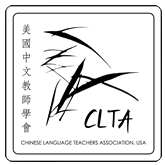Guidelines for Submission of Manuscripts
Procedures:
Manuscripts (see Manuscript Preparation below) submitted to the Journal must not have been previously published elsewhere — either in print or electronically — nor currently under review for possible publication elsewhere.
The Journal publishes articles in both English and Chinese. Authors writing in their non-native language are strongly recommended to have their articles thoroughly edited by professionals with native proficiency in that language prior to submission.
Manuscripts must be submitted on the publisher’s website: https://www.benjamins.com/#catalog/journals/csl/submission.
Manuscripts are reviewed anonymously and rated in five categories: 1) awareness of prior research, 2) originality, 3) quality of research, 4) quality of writing, and 5) significance to the field. Result of the review process, often including reviewers’ comments, suggested revisions, and editors’ decision, will be made available to authors.
Manuscript Preparation:
Authors must observe the rules outlined in the CSL English Formatting Guidelines (or the CSL Chinese Formatting Guidelines if the manuscript is in Chinese), and the John Benjamins Submission Guidelines. Book review authors must consult the CSL Book Review Formatting Guidelines document.
All manuscripts must be readable with all the original formatting (Files prepared in MS Word, version 7 and upward, are usually acceptable). Articles written in Chinese may be in either traditional or simplified characters. It is ultimately the author’s responsibility to present the manuscript in an electronic form that can be accommodated by the software available to the Editor. Character form (traditional or simplified) should be consistent unless the subject of the article requires contrasting the two forms.
Each manuscript submitted to the Journal should begin with abstracts in both English and Chinese, beginning with the one in the language of the article. Each abstract should be 1/4 to 1/2 page in length (approximately 100-200 words in the English version). The abstracts are published on the CLTA website and in other relevant venues. A set of bilingual keywords should be included as well.
Diagrams, tables, and charts must be no more than 5″ wide in order to be accommodated within the width of the Journal, and the font size should be no smaller than 9 points in order to be legible (main text is printed in 11 points).
Chinese characters in articles written in English: Characters should be used in example sentences along with Romanization (italicized), gloss, and English equivalent in single quotation mark, as illustrated below:
- 今年是美国总统竞选年。
Jīnnián shì Mĕiguó zŏngtŏng jìngxuăn nián.
This year is US president election year
‘This year is an election year for the president of the United States.’
All example sentences should be numbered for easy reference. For occasional Chinese words within English text, characters may be used to accompany Romanized words on first occurrence, and where they facilitate identification, but not with words or names that are well-known or can be readily identified.
Romanization: Except for established proper nouns and terminology, Romanization should be done in standard Hanyu Pinyin with tone marks, such as Hànyŭ.
References and Bibliographies: Items in Chinese and Western Languages may be listed together in alphabetic order. Chinese listings must include pinyin Romanization for authors and characters for titles, but provide English translation of the titles as well. Other formatting matters such as the use of capitalization, italics and punctuation should also be consistent throughout the bibliography. For advice on how to organize an article, and for questions about matters of style other than those addressed in these guidelines, please consult the APA Manual (6th Edition): http://www.apastyle.org/
